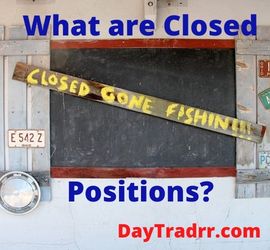What Is Bag Holder Stock?
 Bag holder stock is stock or securities sold to someone else at a high price. Then, the value of the stock suddenly drops. The person left with the stock is the bag holder and the security itself is considered bag holder stock. In other words, someone else is left holding the bag while the stock price plummets.
Bag holder stock is stock or securities sold to someone else at a high price. Then, the value of the stock suddenly drops. The person left with the stock is the bag holder and the security itself is considered bag holder stock. In other words, someone else is left holding the bag while the stock price plummets.
A bag holder is a colloquial phrase for an investor who continues to hold a security that loses value until it becomes essentially worthless. In some circumstances, the bag holder doggedly holds on to their losing position for a lengthy period of time. All the while, the investment loses value. The bag holder typically buys in near the peak, when people are hyping the asset and the price is high. However, bag holders hold it all the way through steep declines, losing a lot of money in the process. Bag holders often fall victim to the disposition effect, also known as the sunk cost fallacy. This irrational mindset drives individuals to cling to their positions for abnormally long periods of time.
Unrealized losses
Many studies show that an investor is more inclined to stick to a losing position. Abandoning it would imply admitting to making a bad investment judgment in the first place. As a result, many investors hang onto a stock for too long. Further, the decline in value is an unrealized loss. Therefore, it is not recorded in their actual accounting until the transaction is completed. Unfortunately, this stubborn mentality often just postpones the inevitable.
Ignorance and Neglect
An investor may hang on to underperforming stocks for a variety of reasons. For example, a buy-and-hold investor may completely disregard their portfolio and be oblivious of a stock’s deteriorating value. Many bag holders just lose track of their investments. With a 401(k), it’s common to lose track of your accounts. Particularly when you change jobs and create accounts with new investment advisers and 401(k) providers. This is also common when you’ve relocated and no longer get physical account statements. In this case, you may unknowingly hold stocks that plummet to zero value during a severe downturn. The answer is as simple as managing and monitoring your money.
Bag Holder Stock & Value Investors
Value investors are more vulnerable to the threat of choosing a bag holder stock than other investing strategies. Buying value by its very definition entails purchasing out-of-favor firms. More often than not, it entails purchasing equities that have declined significantly in price. When you do this, you always incur the danger of the market knowing more than you do. As a result, the shares might continue to fall even lower. However, value investors often believe their strategy is superior to other investing methodologies. Indeed, the whole approach is based on the idea that value investors recognize opportunities that other investors miss.
The question is, how do you make sure that you don’t end up being a bag holder with a bunch of worthless bag holder stocks? There is no definitive answer to this question. However, there are some investment psychology profiles of which you should become aware. Properly informed, you can try and make sure that you are not caught unaware by the market.
Bag Holder Stock Psychology Profiles
Why do investors tend to hold on to losing investments? Many psychology studies have looked closely at this phenomenon. There are a few notable motivations of which investors should be aware.
What is the Disposition Effect?
The disposition effect refers to an investor’s propensity to quickly sell assets that have earned financial gains. Conversely, they hang on too long to assets that are losing money. Human nature motivates us to sell winning assets in order to assure a profit. However, we are hesitant to sell failing investments in the hopes of watching them rebound and become winners. Simply said, investors psychologically dislike losing more than they enjoy winning. As a result, they cling longer to the belief that their lost positions will recover.
What is Prospect Theory?
Prospect theory explains and predicts how individuals make choices when faced with risk, probability, and ambiguity. According to theory, people make choices primarily based on perceived losses or benefits. Moreover, individuals focus more on perceived rewards rather than perceived losses. This hypothesis is demonstrated through experiments where individuals would prefer to be given $50 rather than $100 with the possibility of losing half of it. Both instances gain them $50 in the end. Another example is individuals refusing to work more hours in order to avoid paying greater taxes. Although they stand to benefit in the long run, the greater tax bite looms larger in their decision-making.
What is the Sunk Cost Fallacy?
The Sunk Cost Fallacy highlights the psychological desire to complete an undertaking if we have already expended time, effort, or money into it. This is regardless of whether the present costs exceed the benefits. Because humans are not always logical decision-makers, they are often swayed by emotions. As a result, they are more prone to feel guilty or regretful when not following through on a decision. The more time, effort, or money invested, the more guilt and regret for not following through. The sunk cost fallacy is related to commitment bias. This occurs when we continue to support earlier actions despite fresh data indicating it is not the optimal course of action.
For example, consider an investor purchasing 100 shares of stock at $12 per share. The total position is $1200 minus any broker fees. If the stock falls to $6 per share, the position’s market value drops to $600. As a result, the $600 loss should be seen as a sunk cost. However, many investors are inclined to wait until the stock rebounds in order to regain at least a portion of their investment. This is in spite of the real threat that the stock could continue to drop even further in the coming days or weeks. In reality, the losses have already become a sunk cost and should be treated as permanent. Without further information, there is no indication the stock will rebound or continue to drop even further.
Bag Holder Stock – Examples
In practice, there are usually indications or red flags that a security is a viable candidate for becoming a bag holder stock. For example, if a company’s share price is cyclical, meaning it fluctuates in response to economic shocks. Cyclicality presents a good possibility that riding out tough patches will result in a share price reversal. However, if a company’s fundamentals are critically threatened, its share price may never recover.
Seasoned investors and value hedge fund managers alike lost billions of dollars on big-name bag holder stocks. For example:
- Valeant Pharmaceuticals – is now known as Bausch Health Companies (NYSE: BHC). It didn’t quite reach zero, but peak-to-trough losses were close to 90%.
- JCPenney (OTC: JCPN.Q) – JCPenney is now owned by Simon Property Group and Brookfield Asset Management. The new JCPenney is a private company. It no longer trades on any stock exchange and reports only to its new owners. JCPenney shareholders will get no monetary recovery and their stock is canceled.
- Sears Holdings (NASDAQ: SHLDQ) – Sears was the 20th-largest retailing company in the United States in 2015. It filed for Chapter 11 bankruptcy on October 15, 2018, and sold its assets to ESL Investments in 2019. The new owner moved Sears assets to its newly formed subsidiary Transform Holdco LLC and after that, Sears Holdings Corporation was closed.
Up Next: Credit Sweep – What Are Credit Sweeps in Corporate Finance?
 A credit sweep in corporate finance is an arrangement with a bank to utilize idle funds to automatically pay down a line of credit or loan. Credit sweeps are typically contracts between a bank and a client, usually a corporation. The arrangement calls for all idle cash or extra money in a deposit account to be utilized to pay off short-term debt under a line of credit. Typically, the customer establishes a target balance that determines how much of its money will be utilized. A credit sweep arrangement can significantly reduce a client’s expenditures incurred as a result of interest on existing debt.
A credit sweep in corporate finance is an arrangement with a bank to utilize idle funds to automatically pay down a line of credit or loan. Credit sweeps are typically contracts between a bank and a client, usually a corporation. The arrangement calls for all idle cash or extra money in a deposit account to be utilized to pay off short-term debt under a line of credit. Typically, the customer establishes a target balance that determines how much of its money will be utilized. A credit sweep arrangement can significantly reduce a client’s expenditures incurred as a result of interest on existing debt.
A credit sweep is a cash management technique. It is particularly useful for big organizations with several accounts and high day-to-day payment unpredictability. If the balance in a deposit account exceeds a preset limit, a credit sweep account may be set up to automatically transfer the extra cash to pay down a loan obligation. Most credit sweeps also offer the inverse arrangement, in which if the funds in the account are less than the goal amount, the line of credit will be drawn down to meet the target. The term sweep refers to financial jargon. It simply means the bank can collectively sweep excess funds from one account to another.




